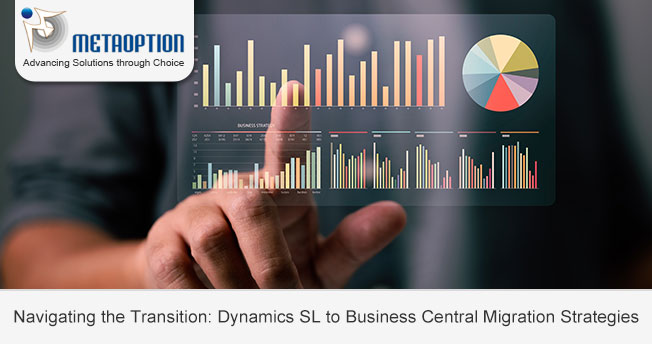
In the realm of enterprise resource planning (ERP) systems, change is inevitable. As technology evolves and business needs shift, companies often find themselves at the crossroads of upgrading their ERP solutions. For organizations currently using Dynamics SL (formerly known as Solomon), the transition to Microsoft’s flagship ERP platform, Business Central, presents a significant opportunity to modernize operations, streamline processes, and unlock new efficiencies.
Understanding the Dynamics SL to Business Central Transition
For many businesses, Dynamics SL has been a reliable workhorse, facilitating core financials, project accounting, and resource management for years. However, as market dynamics evolve and digital transformation becomes imperative, the limitations of legacy systems like Dynamics SL become apparent. Business Central, with its cloud-based architecture, advanced analytics, and seamless integration with the Microsoft ecosystem, offers a compelling alternative.
Challenges and Considerations
While the benefits of migrating from Dynamics SL to Business Central are clear, the transition process itself can be daunting. Here are some key challenges and considerations to keep in mind:
- Data Migration: Transferring years of financial, operational, and customer data from Dynamics SL to Business Central requires meticulous planning and execution to ensure accuracy and completeness.
- Customizations and Integrations: Many businesses have customized their Dynamics SL deployments to suit specific workflows and requirements. Evaluating which customizations are still relevant and replicating or redesigning them for Business Central is crucial.
- User Training and Adoption: Switching to a new ERP system can disrupt workflows and require employees to learn new tools and processes. Investing in comprehensive training and change management strategies is essential to facilitate a smooth transition.
- Business Continuity: Minimizing downtime and ensuring uninterrupted operations during the migration process is critical. Developing a robust migration plan with clear timelines, milestones, and fallback procedures can mitigate risks and minimize disruptions.
Migration Strategies for Success
To navigate the transition from Dynamics SL to Business Central effectively, organizations should consider the following strategies:
- Assessment and Planning: Conduct a thorough assessment of your current Dynamics SL environment, including data structures, customizations, and integrations. Develop a detailed migration plan that outlines objectives, timelines, resource requirements, and risk mitigation strategies.
- Data Cleansing and Preparation: Cleanse and standardize your data before migration to eliminate duplicates, inconsistencies, and inaccuracies. Develop mapping templates to ensure seamless data transformation and compatibility between Dynamics SL and Business Central data models.
- Pilot Testing and Validation: Perform comprehensive pilot testing to validate data integrity, system functionality, and user acceptance before fully transitioning to Business Central. Solicit feedback from end-users and stakeholders to identify and address any issues or concerns proactively.
- Training and Change Management: Invest in comprehensive training programs to familiarize users with the features, functionalities, and workflows of Business Central. Provide ongoing support and resources to facilitate user adoption and address any challenges or resistance to change.
- Post-Migration Optimization: Continuously monitor and optimize your Business Central deployment to maximize performance, scalability, and ROI. Leverage built-in analytics and reporting tools to gain insights into your business operations and identify areas for improvement and innovation.
Winding Up:
The transition from Dynamics SL to Business Central represents a significant opportunity for organizations to modernize their ERP infrastructure, drive operational efficiency, and accelerate business growth. By carefully planning and executing the migration process, businesses can minimize risks, maximize benefits, and position themselves for long-term success in an increasingly competitive landscape.
Embrace the change, navigate the transition, and unlock the full potential of Business Central as your organization’s premier ERP solution.
For more information and a tailored demonstration contact us today at Metaoption.


